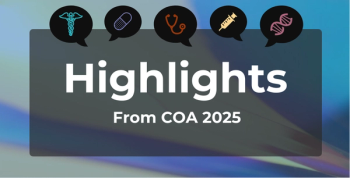
Dr Margaret Liang on Mitigating Financial Toxicity for Patients With Cancer
Margaret Liang, MD, MSHPM, gynecologic oncologist and health services researcher and director, Gynecologic Oncology Fellowship Program, Cedars-Sinai Cancer Center, discusses financial toxicity in cancer care and how institutions can help alleviate the financial burden for patients.
Margaret Liang, MD, MSHPM, gynecologic oncologist, health services researcher, and director, Gynecologic Oncology Fellowship Program, Cedars-Sinai Cancer Center, discusses financial toxicity in cancer care and how institutions can help alleviate the financial burden for patients.
Transcript
What are some common financial challenges that patients with cancer and their families face, and how can a well-designed financial advocacy program help address financial toxicity while ensuring access to quality care?
The biggest one that comes to mind first is really navigating the complexities of insurance. So, helping patients understand what their insurance benefits are—and that may just be figuring out a minimum, like what their annual out-of-pocket maximum may be—and then having individuals who can help them navigate what's in and out of network, and make sure that their treatments are going to be authorized, and if not, go through the appeal process with them.
The second thing that comes to mind is that drug costs are really skyrocketing. Also, there's been more oral cancer drug therapies that are being used in oncology, and these can be very expensive and also require using specialty pharmacies. So, having someone as part of the financial advocacy team understand how to navigate copayment cards, free drugs from pharmaceutical companies, [and] foundation grants that have sometimes a lot of different eligibility criteria that need to be tracked.
And the third thing is really thinking about, besides all the medical costs, what are all the different things that the patients are having to do in order to adhere to their care? So, transportation, thinking about employment concerns and possibly how it's impacting their caregivers.
How can health care institutions engage with external stakeholders, such as insurance providers, pharmaceutical companies, and patient advocacy groups, to enhance financial support and advocacy for patients with cancer?
I think the first thing is really getting to know the local or regional community, so looking into cancer support organizations or nonprofit organizations that provide assistance to patients [and] developing standing relationships with them. The second thing is, clearly, certain things may be available in certain areas or geographic geographies, so really leveraging the reputable national organizations that have a lot of patient-facing resources, as well as resources to help health care practices.
Lastly, really keeping an open line of communication with pharmaceutical companies. They do have a lot of financial assistance programs, like copayment assistance programs or even free drugs, that can be accessed. I think there can be a lot of administrative burden that comes with applying for these things or keeping up-to-date, but if you keep open lines of communication with them, you can really optimize those opportunities.
Newsletter
Stay ahead of policy, cost, and value—subscribe to AJMC for expert insights at the intersection of clinical care and health economics.








